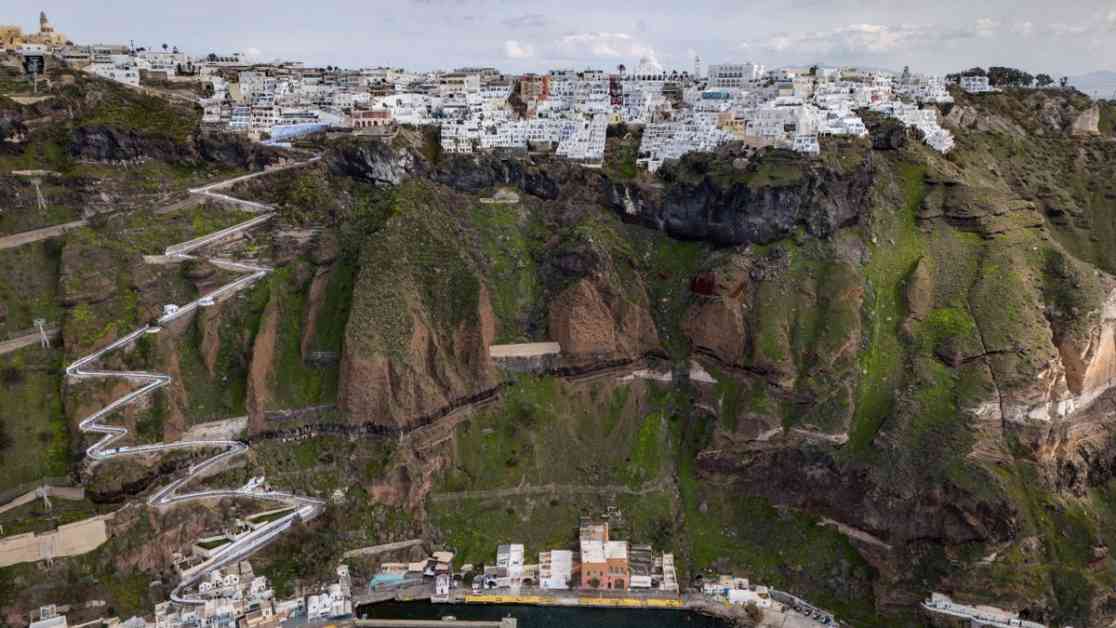A series of earthquakes near the volcanic island of Santorini has intensified, prompting Greek authorities to take precautionary measures, including closing schools and deploying emergency crews. While scientists do not anticipate an eruption from Santorini or other nearby volcanoes, they warn of more powerful earthquakes on the horizon.
The seismic activity began last week, with a cluster of underwater earthquakes originating in the Aegean Sea. These small tremors, mostly measuring 3.5 or less on the Richter scale, have increased in frequency up to Monday, February 3rd. The strongest quake recorded so far registered at a magnitude of 5, striking 21 miles northeast of Santorini.
Authorities in Greece have responded to the escalating situation by implementing safety measures on Santorini and surrounding islands, all popular tourist destinations. While Santorini is situated on the exposed part of the Santorini caldera, an underwater volcano, researchers attribute the earthquakes to tectonic plate movement rather than volcanic activity.
David Pyle, an Earth sciences professor at the University of Oxford, suggests that the quakes are likely a result of fault movements within the region. Describing the ongoing earthquake swarm as “unusual,” Pyle highlights the challenge of predicting future events due to the underwater nature of the seismic activity.
The Science Behind the Tremors
The Aegean Sea’s unique geological setting, with a small crustal plate that stretches as the African plate slides beneath the Eurasian plate, creates stresses that influence fault movements and trigger earthquakes. While Santorini has experienced similar earthquake swarms in the past, the current series appears more severe and widespread than previous events.
Pyle notes that the majority of recent earthquakes are clustered between the Kolumbo volcano and the island of Anydros, approximately 4.4 miles northeast of Santorini. Despite the evidence pointing to plate tectonics as the primary driver of the seismic activity, researchers remain uncertain about any potential volcanic implications at Kolumbo.
The Historical Context and Future Concerns
The Kolumbo volcano last erupted in 1650, causing a devastating tsunami that impacted nearby islands. Meanwhile, Santorini’s volcanic history dates back to the Minoan eruption in 1600 B.C., one of the most significant volcanic events in human history.
With the ongoing earthquake swarm intensifying near Santorini and Kolumbo, experts are vigilant about monitoring the situation. While the current seismic activity does not directly correlate with volcanic eruptions, the unpredictability of underwater systems supplying magma to the volcanoes remains a concern for researchers and local authorities.
As the situation continues to unfold, Greek authorities, scientists, and residents alike are keeping a watchful eye on the seismic activity in the region. The potential impact of these earthquakes on Santorini and neighboring islands underscores the importance of ongoing research and preparedness in the face of natural phenomena.










